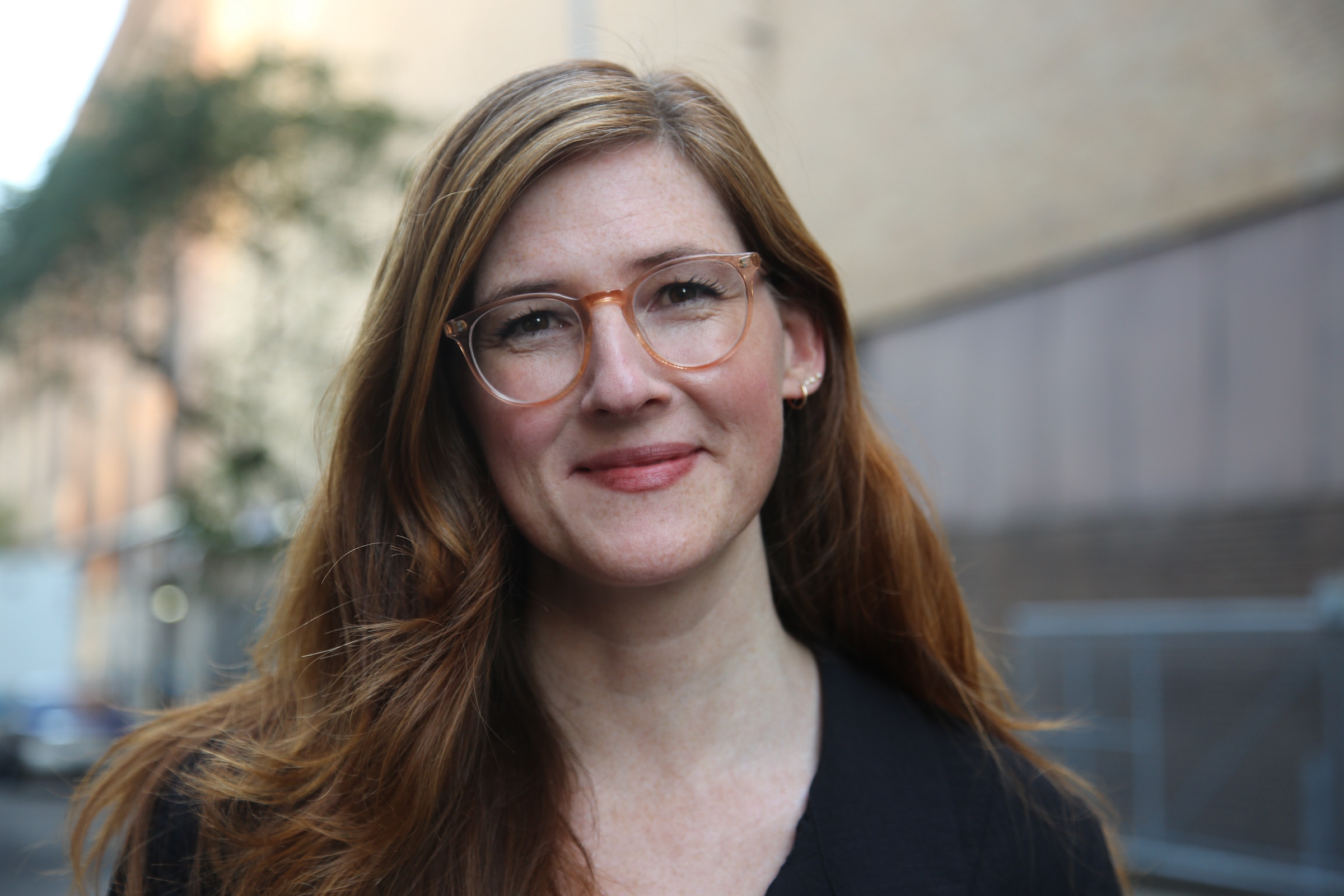Two weeks ago our sixth- and seventh-grade after-school theater performers gave us a tour of a middle schooler’s phone from the inside, with all of its potential cruelty and kindness. The performers in Trapped?! reminded us that the “screenage” years are full of opportunities for connection, and fraught with social pitfalls. It is middle school in hyperdrive. In a recent workshop with our eighth-grade students about discerning among content online, I was struck by how many of them claim they would report inappropriate content — and by how few of them said it would ever cross their minds to speak to an adult. It seems like this world of content— positive, negative, silly, heavy, vacuous; humor, rage foibles, dance routines, errors, all in 10-second bytes— can feel as if it is completely devoid of adults or guides.
Chesna Flora, the Lycee’s Primary Digital Learning integrator received a leadership grant to host screenings and follow-up conversations of the documentary film Screenagers.
Said one sixth grader after the screening, ‘I had never realized how serious screen addiction was and thought that it was a minor problem few people had to deal with. It was shocking to see how severe the issue was and how much it affected people’s lives….I felt as though I understood [from the film] what was causing screen addiction and how severe it is, but I didn’t really know how to fix it or protect myself from it. “
Students have been discussing the tools they use to help themselves make the best choices, as well as the boundaries they might like to see involving technology. We spoke about what she has found in this year of research and development on the essentiel topic of digital well-being, and particularly, what she has been seeing from students in these critical years in their development of autonomy between fourth and seventh grade (CM1 to 5ème).

Chesna, you are working on a Leadership Grant on Digital Wellbeing. What drove you to pursue this topic?
Over the past few years working with the fifth-grade students, I noticed a lack of knowledge on their part about how the internet works, and the effects that the use of the internet can have on their well-being. Fifth grade is a critical age for most students, because as they move to sixth grade–and are often given a smartphone— they are suddenly expected to manage their time and lives in a way that many are not prepared to do.
We’ve adapted (and are always adapting) our digital citizenship curriculum in the Primary School to respond to these needs, and we realized we needed to involve the entire school community.
What response have you received from students following Screenagers?
Monitoring activity, showing our presence, examining our practices, setting limits, modeling, and normalizing conversation about content seem to be essential ingredients to the balance we all seek.
When you read results of the student surveys following the film, one of the things that becomes very clear is that students are looking for guidelines for balance. They are also seeking support, and more understanding about how it all works. They want to know what effects new technology is having on health and well-being.
This isn’t just one voice. It is one of many.
At what age point would you say students are the most at risk for coming across something that is not appropriate for their age?
Students have come into class with questions about hate speech memes and dating apps as early as in fifth grade. As soon as they have open internet access, or are spending time with a friend who has open access, they are at risk for coming across material not meant for their age group.
What are some tips and recommendations you might have for acting in proactive and protective ways regarding technology use at home?
These few reminders may come in handy:
- 13 is the minimum age for most social media platforms.
- Video games featuring graphic violence are rated for 18 and over. If you are not sure, you can check the ratings.
- Developing media literacy is an ongoing conversation. Tech Talk Tuesdays offer great conversation prompts for families. They can be used starting at a young age.
- Screen Time, which you can read about in the iPad/BYOD Topic Page on MyLycee, is a great way to practice balance, block inappropriate content, and get a good sense for how much time is actually critical for school work.
- If you come across a question you don’t know the answer to, you can look it up together — modeling good use of technology to seek out information.
- We need to remember that the internet is not designed with children in mind. While there is content for children, it is not a tool for children. They need monitoring when they have access to the internet. We don’t need to be over our kids’ shoulders all the time, but present — preferably in the same physical space, if possible- and aware of what is going on. We wouldn’t put children in a pool unsupervised, even if they are a good swimmer.
Testing limits is part of healthy development in the middle school experience. Purposeful engagement and clear limits can help direct focus and reduce compulsive distracting behaviors. How can we encourage students to attain and maintain healthy balance?
We don’t need to be over our kids’ shoulders all the time, but present — preferably in the same physical space, if possible- and aware of what is going on.
The most important thing you can do is foster the kind of relationship with your child where they can come to you anytime with any question. Regardless of where they are, they will come across material that they cannot understand or don’t feel comfortable with, and they need to be able to come to a trusted adult without fear.
The Lycée’s next steps in addressing digital well-being
Adena Dershowitz, our Director of Curriculum Development & Professional Learning, had some additional insights as to where we currently stand: “We are in the process of a number of initiatives aimed at helping students to better balance their time on and off devices: the CPET is examining the current cell-phone policy with the goal of increased uniformity, simplicity and enforceability, and we have worked with the fourth- and fifth-grade teachers to continue to clarify protocols surrounding iPad use and misuse. After implementing these processes, we will examine how we might scale them up for students in sixth to eighth grade.
Additionally, we want to continue dialogue with students and parents on this topic. We have been able to improve and amend our program because of parent openness and honesty. We are planning to launch a digital wellness series next school year, featuring specific subtopics related to the use of digital devices.”
It is also time to reflect on how we adults can change our communication practices to assure that we are not contributing to students feeling unnecessarily compelled, or unnecessarily tempted, to check their devices. According to Screenagers, this work needs to be undertaken as a joint effort– as a community.
Monitoring activity, showing our presence, examining our practices, setting limits, modeling, and normalizing conversation about content seem to be essential ingredients to the balance we all seek. Given the speed and ubiquitous presence of technology, we do indeed have our work cut out for us– but when meeting students where they are, quandaries come with opportunities for a clarification of values, and of course, connection.
About the Author :
Jamie Laurens joined the Lycée in 2007. A native of the Rockies, Jamie began working on student wellness as a college student at Carnegie Mellon University in Pittsburgh, Pennsylvania and in Avignon, France, where she chose education as a vocation. She began at Idyllwild Arts Academy and Westridge School before moving to New York and the Lycée. She has taught in the English program in middle and high school, co-developed the Advisory and Social Entrepreneurship programs, and researched the links between attention, learning, and well-being. Jamie enjoys reading poetry and being in the outdoors.


